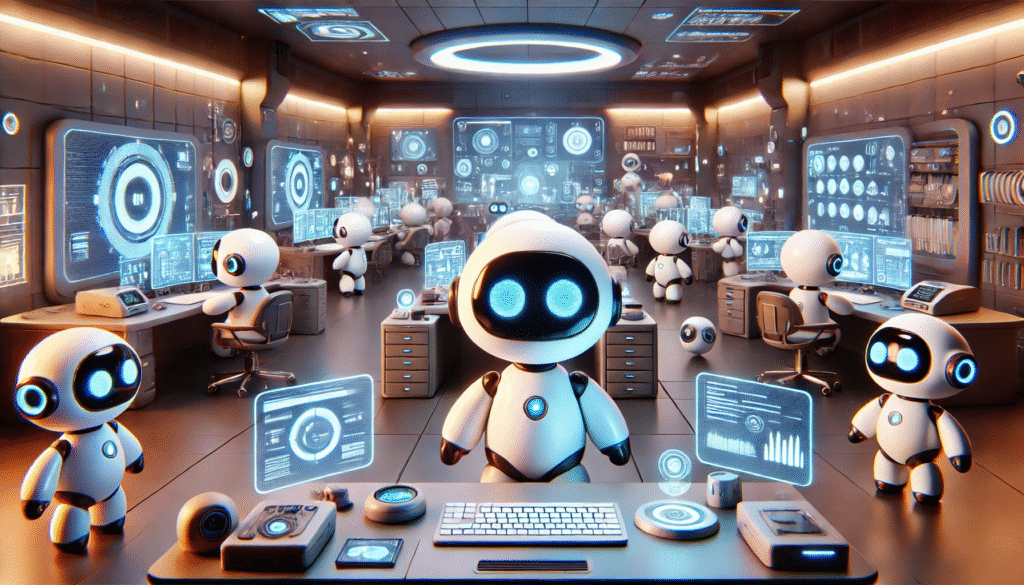AI Cuts Development Costs and Lowers Global Dev Rates

AI cuts development costs by transforming how software is built, automating repetitive coding tasks, optimizing workflows, and accelerating production cycles. Whether in startups or multinational corporations, AI-powered tools are directly lowering development costs and reshaping how businesses hire, pay, and collaborate with developers worldwide. In this article, you’ll discover how AI is not just an enhancement but a disruptive force that is rewriting the rules of software development economics.
How AI Cuts Development Costs From Day One
When we say AI cuts development costs, the impact begins long before the first line of production code is written. AI assists in brainstorming, drafting technical specifications, generating wireframes, and producing functional prototypes. Tools like ChatGPT, GitHub Copilot, and Tabnine enable teams to automate the creation of boilerplate code, validation scripts, and API documentation—tasks that previously required entire sprints.
Beyond coding, AI offers predictive modeling for infrastructure choices, suggesting optimal architectures based on historical performance data. This reduces time wasted on trial-and-error during the planning phase and prevents expensive mistakes later in development.
For product managers and non-technical founders, AI serves as an early-stage partner. It helps translate business needs into technical roadmaps without needing a full engineering team from day one. This dramatically lowers the cost barrier for launching MVPs and testing new ideas.
How AI Reshapes Developer Rates Globally
The fact that AI cuts development costs is now a tangible force reshaping the freelance economy, agency pricing, and corporate software budgets. AI reduces the total man-hours needed for tasks like feature development, debugging, testing, and documentation. Consequently, hourly billing models based on manual effort are losing relevance.
Freelancers and contractors who previously billed dozens of hours for template creation or CRUD operations now face competition from AI that performs these tasks in seconds. Businesses are responding by offering lower rates for manual tasks or shifting toward outcome-based pricing.
On the flip side, developers with AI proficiency—those who understand prompt engineering, AI workflow design, and validation of AI outputs—command higher rates. The gap between AI-augmented developers and traditional developers is widening globally.
Is AI Causing a Drop in Developer Salaries?
It depends. Entry-level and junior developer roles focused on repetitive tasks are experiencing rate pressure, particularly in freelance and gig marketplaces. However, mid-level and senior developers, AI specialists, and technical architects are seeing an increase in demand and compensation. AI doesn’t eliminate jobs; it redistributes value toward those who can orchestrate, supervise, and optimize AI-assisted workflows.
What Are the Main Tools Driving This Shift?
The AI revolution in development is powered by tools like:
- GitHub Copilot: Suggests code completions, entire functions, and even full projects.
- ChatGPT: Assists with generating algorithms, writing code snippets, debugging, and even documentation.
- Tabnine: AI code autocompletion with contextual awareness.
- Amazon CodeWhisperer: Provides recommendations tailored to AWS services and backend logic.
- Replit Ghostwriter: AI-powered code generation within a cloud IDE, excellent for rapid prototyping.
These tools don’t just automate—they accelerate and elevate development by reducing human error, automating testing, and generating production-grade code in a fraction of the time.
Real-World Use Cases: How AI Saves Companies Money
Major enterprises like Microsoft, IBM, and Amazon report up to 45% reduction in development time since adopting AI-powered tools. These savings translate directly into lower costs on developer salaries, reduced time-to-market, and fewer resources spent on debugging and testing.
In fintech, AI automates compliance checks, fraud detection algorithms, and reporting dashboards, cutting both operational and development costs. E-commerce platforms use AI to auto-generate product description pages, recommendation systems, and checkout workflows—tasks that used to require weeks of manual coding.
In Brazil, mid-size software agencies deploying AI within DevOps pipelines report reducing delivery time by 30%, improving testing accuracy, and lowering infrastructure costs through smarter deployment scripts.
Startups benefit even more. Instead of hiring full development teams upfront, founders can launch MVPs with AI tools handling backend scaffolding, front-end templates, and even API integration. This cuts initial investment costs by thousands of dollars.
Who Benefits the Most?
Businesses of all sizes—startups, SMEs, and enterprises—benefit from AI-driven cost reduction. Agile teams ship faster, freelancers deliver more projects in less time, and corporations reduce both payroll and contractor spending without sacrificing quality.
Consumers indirectly benefit as well. Lower development costs mean cheaper software solutions, faster updates, and more competitive markets where smaller companies can challenge tech giants.
Limits and Challenges of AI Automation
Even though AI cuts development costs, it is not a magic solution. AI still struggles with:
- Complex business logic beyond pattern recognition.
- Ethical and legal concerns surrounding code licensing.
- Biases in training data that may lead to security flaws or inefficiencies.
- Reliance on high-quality prompts and human validation to ensure accuracy.
There are also challenges in adopting AI at scale, including training developers on AI tools, integrating AI within CI/CD pipelines, and ensuring code security and intellectual property compliance.
Does AI Eliminate Developer Jobs?
AI doesn’t eliminate developers—it transforms their roles. Routine coding tasks are vanishing, but the demand for architects, system designers, AI operators, and human validators is skyrocketing. Developers who pair their expertise with AI become exponentially more productive and valuable.
Are There Legal and Security Risks?
Yes. Generated code may include snippets inadvertently sourced from proprietary or open-source licenses. There’s also the risk of introducing security vulnerabilities through poorly tested AI outputs. Businesses must maintain rigorous code reviews, license audits, and automated security checks.
How to Maximize Savings With AI in Development
If you’re ready to embrace how AI cuts development costs, follow these steps:
- Invest in prompt engineering: Teach developers how to write effective prompts for tools like ChatGPT and Copilot.
- Integrate AI with CI/CD: Automate testing, deployment, and error tracking to compound time savings.
- Define KPIs: Track metrics like bugs per release, hours saved, and time-to-market improvements to measure ROI.
- Perform regular audits: Ensure AI-generated code complies with security, quality, and licensing standards.
- Upskill your team: Provide training on AI ethics, limitations, and advanced AI-assisted workflows.
Conclusion
AI cuts development costs by automating tasks, streamlining workflows, and reshaping how businesses hire and pay developers. From faster prototyping to automated testing and documentation, AI reduces costs without sacrificing quality.
The companies that adapt to this shift will outpace competitors, reduce expenses, and deliver better products faster. If you’re looking to improve delivery speed, control budgets, and scale without scaling headcount—integrating AI into your development pipeline is no longer optional; it’s essential.
Frequently Asked Questions
- Will AI replace developers? No. AI automates repetitive tasks but elevates developers to focus on architecture, strategy, and oversight.
- How much can I save with AI? On average, companies report 20% to 45% savings in development time and cost when properly using AI.
- Is there a legal risk with AI-generated code? Yes. AI can produce code with licensing conflicts or security issues. Code review and license compliance are essential.
- What tools should I start with? Begin with GitHub Copilot and ChatGPT for coding, then expand to CI/CD AI integrations for deployment automation.
🚀 Explore More and Stay Ahead!
Want to dive deeper into AI tools and boost your productivity?
- 👉 ChatGPT Basics: A Beginner’s Guide from Scratch
- 👉 Create Your Own ChatGPT: Full Customization Guide
- 👉 How to Use ChatGPT to Automate Daily Routines
- 👉 How to Use Google Gemini: Step-by-Step for Productivity
💡 Subscribe to the TechInNess Newsletter and get exclusive access to free PDF guides — including our upcoming Complete ChatGPT Guide with step-by-step tips, prompt examples, and automation tricks.



